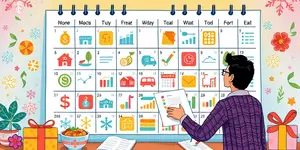
Every dollar you earn carries a story. From the morning latte to the monthly mortgage, each transaction reveals choices about what matters most in our lives. Yet for many, the paths of those dollars remain hidden in piles of receipts and forgotten subscriptions.
Imagine transforming that uncertainty into crystal-clear financial insight, empowering you to direct your resources toward goals, dreams, and peace of mind. This guide will show you how to harness modern tools and vivid visuals to reveal exactly where every dollar flows—and why that clarity can change everything.
Humans are visual creatures. When we see trends and patterns drawn out, we tap a deeper level of understanding than raw numbers alone can provide. By turning transaction data into colorful charts and dynamic dashboards, you gain actionable insights in real time.
With a clear map of your spending, you can:
Whether you’re a spreadsheet enthusiast or prefer a dedicated app, an array of solutions awaits. Here’s a curated overview of the most popular personal finance tools:
Choosing the right tool depends on your style, technical comfort, and the depth of analysis you desire. The table below highlights each tool’s core strength:
Once your data populates the tool of your choice, it’s time to craft visuals that communicate clearly:
By layering filters—such as timeframes, payees, or custom tags—you can drill down into specific habits, like dining out or subscription services, to see how they evolve week by week.
Consider the journey of Sarah, a graphic designer in her twenties who felt perpetually behind on bills. She started by logging her spending in Google Sheets manually. Visualizing her data in a simple bar chart revealed she was spending nearly 20% of her income on coffee subscriptions and meal deliveries.
This eye-opening insight motivated her to switch to Tiller, where transactions updated automatically each morning. With a clear dashboard and colored pie charts, she reallocated funds from dining out into a savings goal for a European backpacking trip. Within six months, she had saved over $3,000 and cultivated healthier spending habits.
On the business side, imagine a small bakery owner using Visual Budget to compare weekly revenue against ingredient and labor costs. Line charts exposed seasonal swings in flour costs, prompting her to negotiate bulk discounts during slower months. The result? A measurable increase in profit margins and less financial stress when ovens were idle.
Visualization is only powerful if you stay consistent. Here are strategies to keep you engaged:
In a world awash with data, the true advantage lies in transforming raw numbers into compelling visual stories that guide your decisions. By leveraging spreadsheets or intuitive apps, and by crafting clear charts, you’ll move from confusion to command—understanding exactly where every dollar goes and why.
This journey isn’t just about numbers; it’s about reclaiming control of your financial destiny. As you embrace visualization tools, you’ll unlock the ability to prioritize what matters most: security, experiences, and the freedom to dream bigger. Take the first step today, and watch as each dollar you track becomes a stepping stone toward your brightest future.
References













